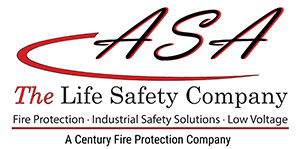Prep Your Fire Sprinkler for the Winter Freeze
With the approach of freezing temperatures, if you’ve not taken care of your business’ fire sprinklers, you’re likely to experience potential issues that can result in an expensive fix. Your sprinkler system may be at risk to freeze, but ASA Fire Protection wants to make you aware of this information so you can protect your property and personnel.
Situations That Put You At Risk
If any of these situations apply to you, you are at risk of leaks from frozen sprinkler lines, which will result in impairment to your building and unwanted costs.
1. You have a wet, dry, preaction or deluge sprinkler system in your facility.
2. There are areas outside that have sprinkler coverage that contain antifreeze.
3. Sections of your building are not in use or are unheated.
4. There is exposure to the outside via penetrations that are not closed or inoperable.
5. You have attic space where sprinkler piping is present and insulation is not present.
What Can You Do To Avoid Frozen Sprinkler Lines?
Regular maintenance will have your fire sprinklers ready for the cold months. There are 2 main types of sprinklers: wet and dry.
For Wet Systems:
Wet sprinkler systems are found in many business spaces. In these systems, pipes are always full of water, spraying out when triggered. Wet systems are susceptible to freezing when pipes run through unheated areas within a building. In some cases, antifreeze can be added to the water to reduce the freezing point.
The most important factor for keeping a wet system unfrozen is the temperature. Parts of the system may run through stairwells, attics or other places which may not be heated sufficiently. The temperature should be kept at a minimum of 40 degrees or higher anywhere there are sprinkler components in the building.
For Dry Systems:
The pipes within dry systems remain full of pressurized air. The air keeps the water from the main line at bay until activation, when the air pressure releases, letting the water flow throughout the system. The pipes do however contain moisture which can freeze at some points within the pipes. When preparing for colder weather, a professional can drain specific low points to get rid of condensation to prevent freezing.
Regardless of the type of system there are some important things that should be checked to ensure that your pipes don’t freeze:
Heating sources should be inspected for proper operation
Any penetrations should be sealed when freezing temperatures may occur
Spaces like attics should have insulation that is properly installed by a professional to ensure protection
